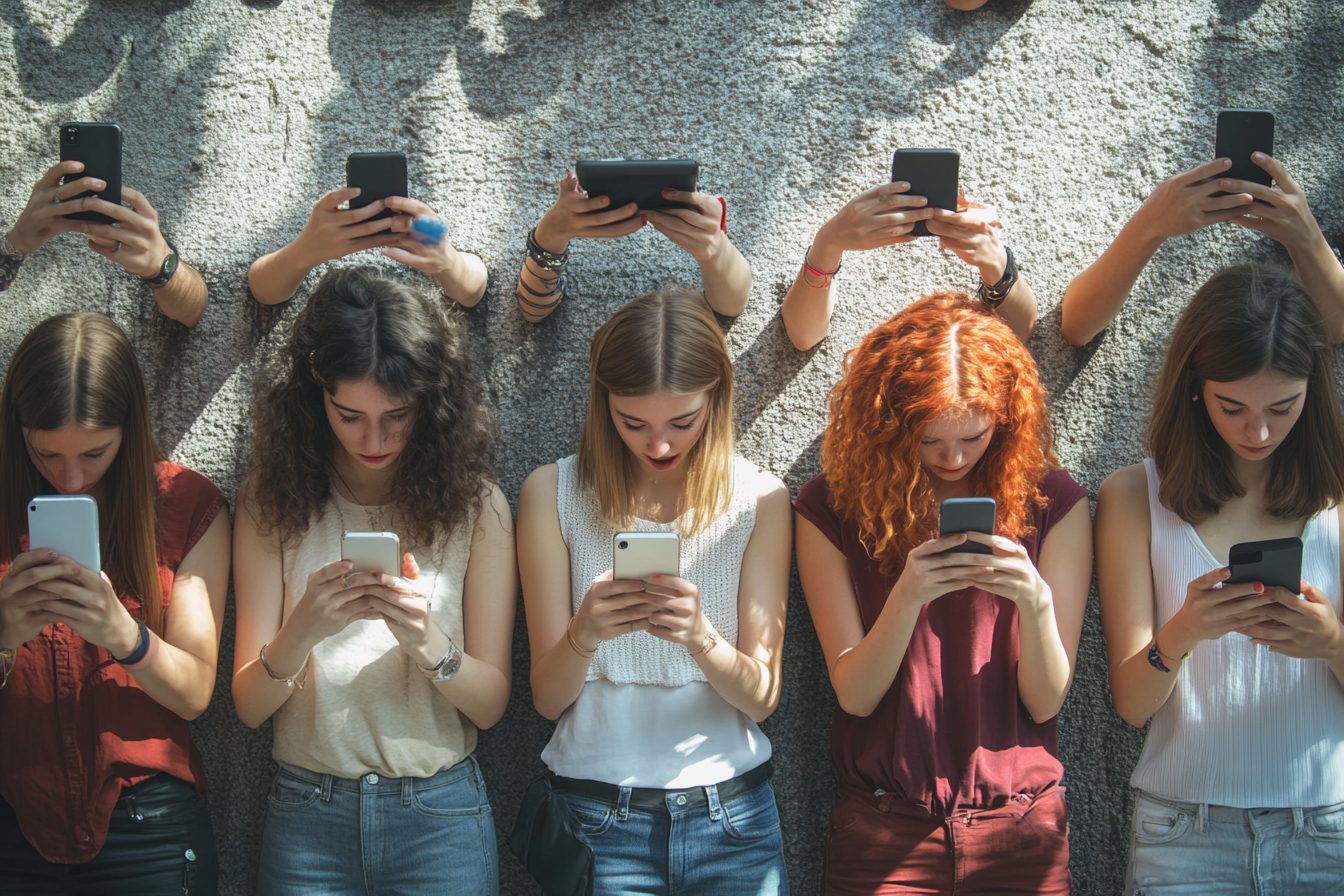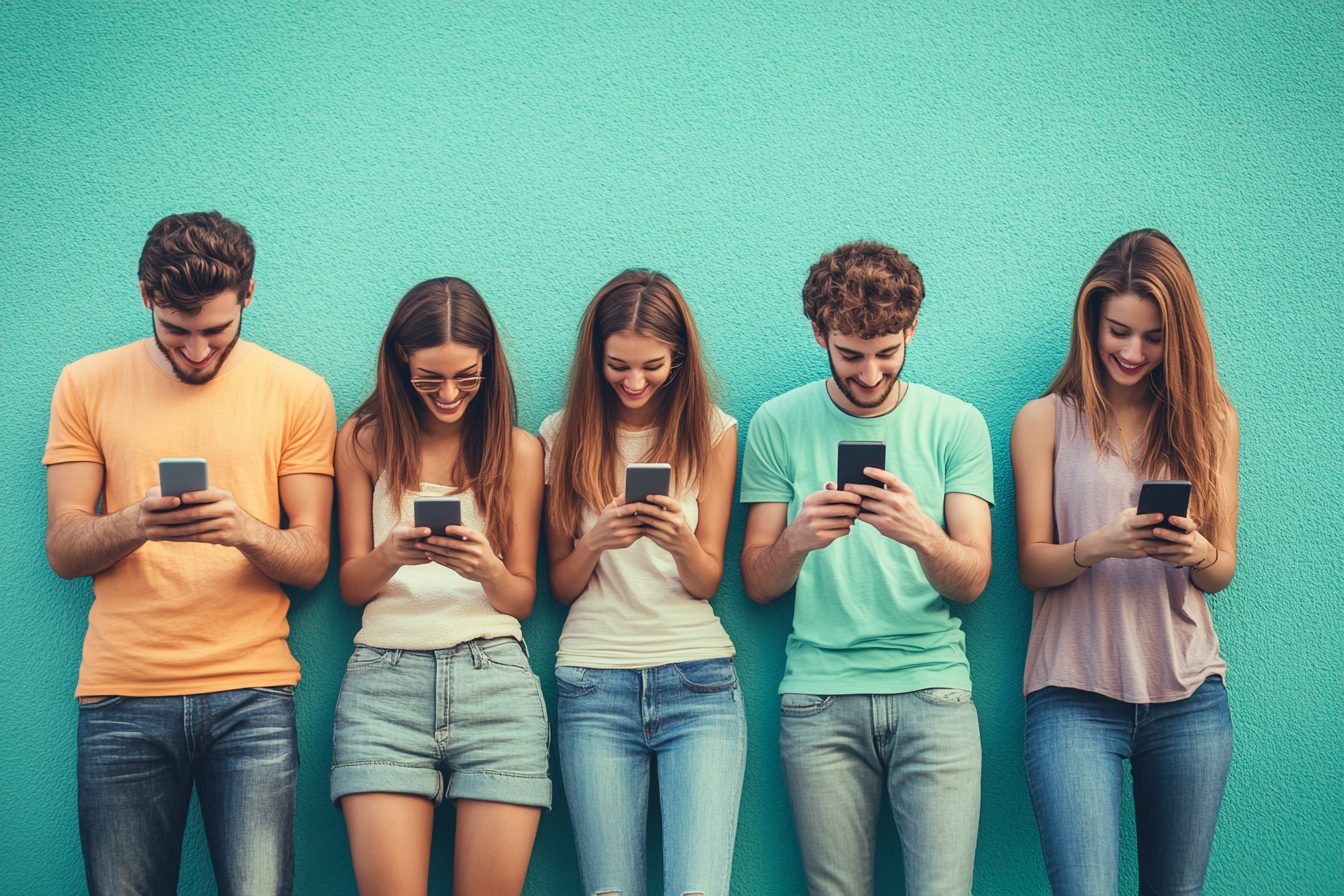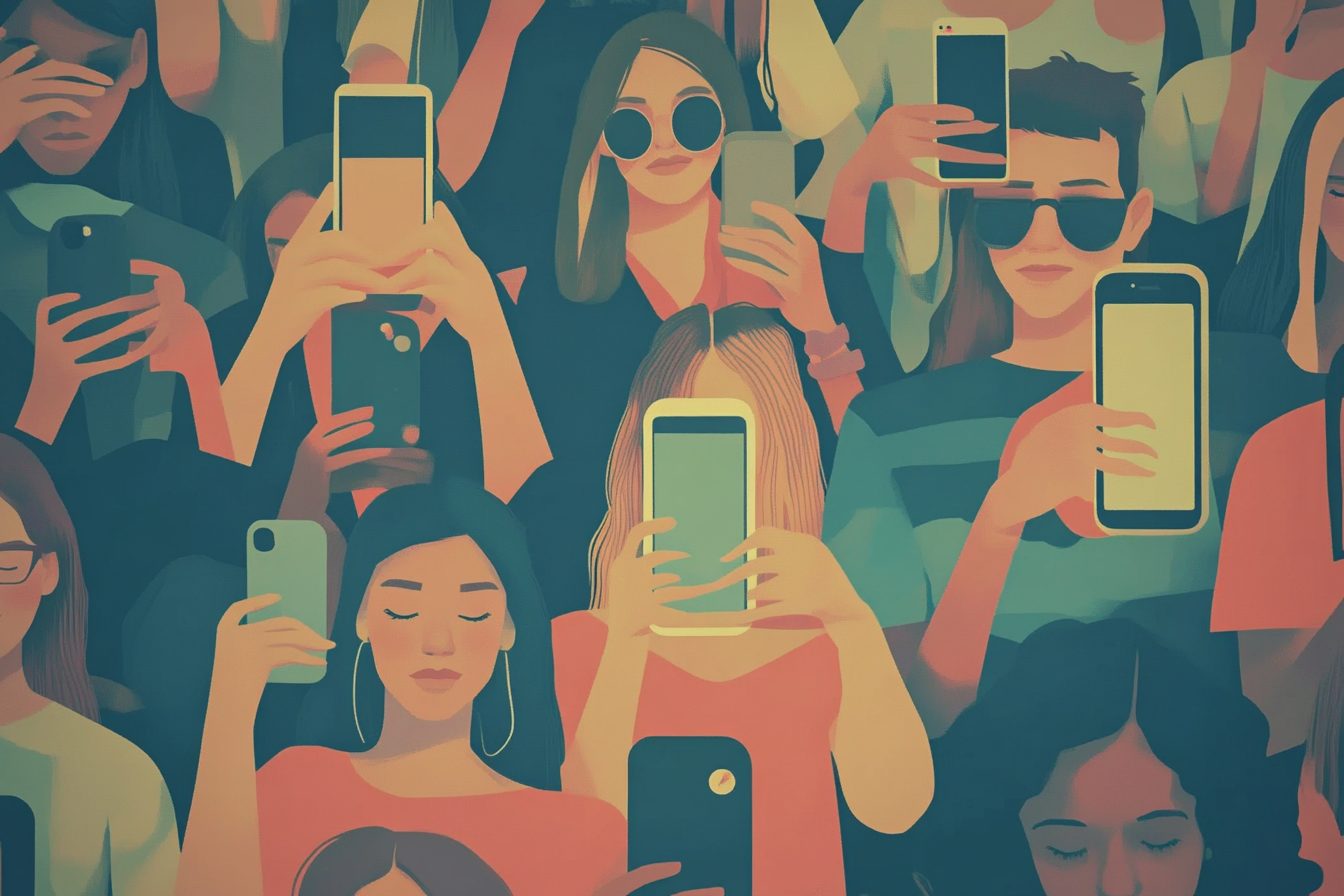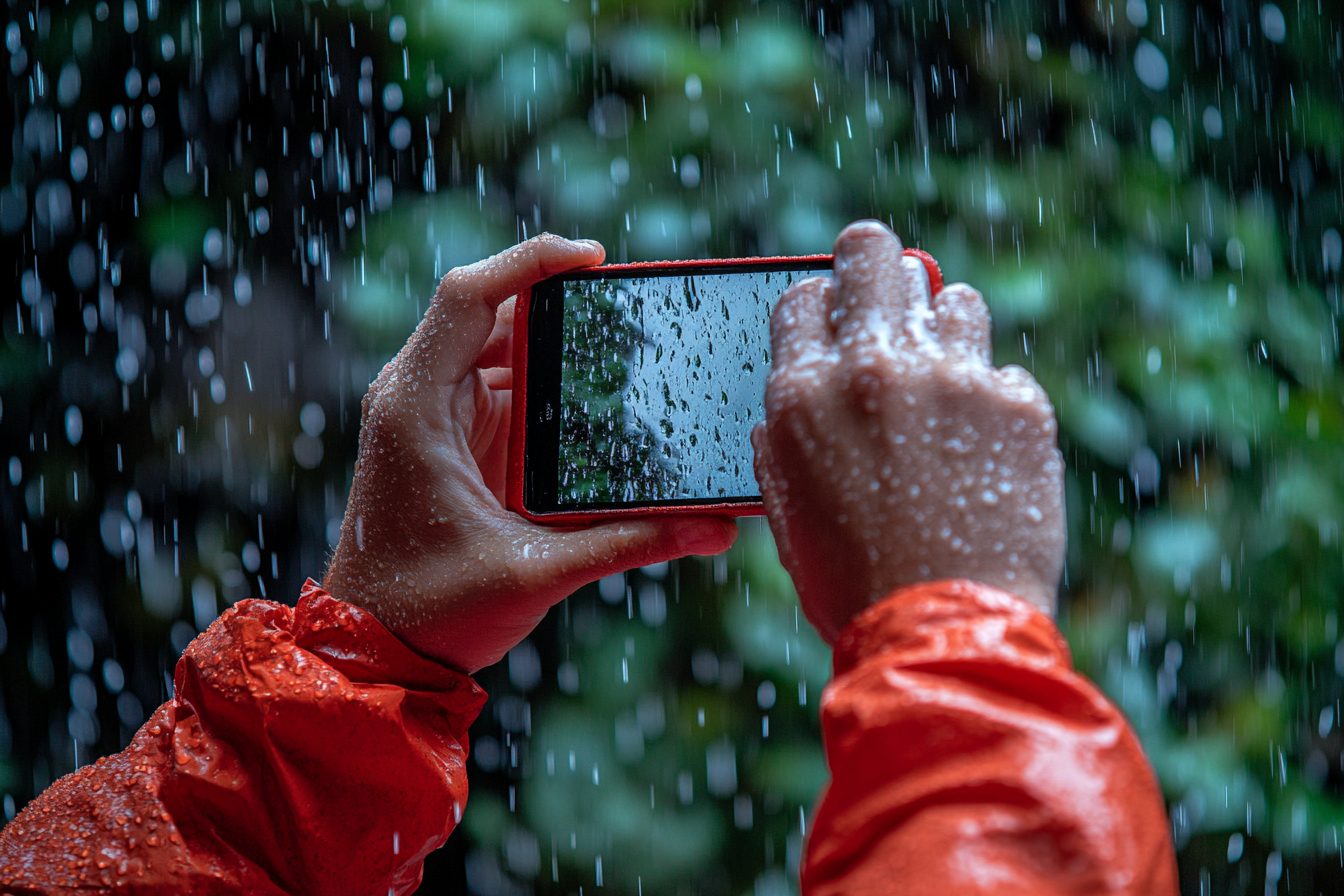Last year, my birthday dinner was delayed by half an hour simply because I was trying to upload a picture of my workspace to Instagram. When I stood in the office “setting up” coffee cups and notebooks as props, I couldn’t stop thinking about how my friends were out at a restaurant trying to celebrate me. It was indeed ironic, as would be obvious to anyone else, and I was clearly not saved from this insight.
I mean, should it really matter that the plant was fake? With an aim to sustain an illusion, I perfectly chiselled the image of “a successful writer with a desk and a plant collection,” and in reality, how I “crafted” my image was, I killed the real plant three weeks ago, and the desk that was “tidy” had a 2 feet wide perimeter of an organized clutter zone.
Such a scenario encapsulates the paradox of our online presence. There are always unaccounted actions we do just to balance measurable ones in their records unlike in reality where we replace actions with crafting records of perfect actions. The ironic twist?
In my case, regardless of the fact that it is my job to write about these things, I’m equally exposed to this phenomenon. The harsh reality? All of us do.
To this day, it continues to boggle my mind at theographical portfolios. This platform expertly encourages users to share chosen snippets of their lives, while simultaneously hypnotizing them to participate in a system that I helped create. Systems that operate to maximize “positive reinforcement patterns” were put in place. Meaning, in laymen terms, we ensured that users are able to attain just the right amount of “likes” to increase their desire to post, while simultaneously using algorithms to prevent content stagnation.
Through the engineering of social media interfaces, our goal was to maximize self validation seeking behavior.
The succor for relentless rivalry to produce fantastically unparalleled content was cultivated expertly. Social media had completely surpassed all expectations. Compelling users to allocate boundless attention towards their devices, algorithms disguised life as beautifully curated highlight reels instead of an authentic representation of daily life.
Your college roommate’s feed is filled with pictures of him enjoying anniversary vacations, and shares the promotion he received at work, but never posts about the credit card debt or the fight he had with his wife. Former colleagues churn out the same content over and over. They don’t tell you about sleepless nights or dealing with impostor syndrome, instead they share their marathon medal and their daughter’s honor roll certificate. That’s not misinformation, it is curation.
A couple weeks ago, a friend of mine went out to dinner with me. While having dinner, I checked her Instagram and it seemed like she lived in a sun filled, child-themed room straight out of a fairytale. The dinner, however, was at her house where she told me she needed my assistance to clear three stacks of laundry off the couch so she could sit down while her children battled over an iPad.
Then she started telling me how this is not much of a mess. I was shocked by the contrast between her actual life, which I had assumed was far more ‘perfect’ than her social media self, and this reality. Instead of an elaborately staged studio, she uses her actual home, but needs to be edited into organized corners with disordered angles.
“What’s the time you spend on perfecting an Instagram show from the comfort of your couch?” was my other question. “Sifting through the clutter in my phone takes around forty five minutes,” she responded. “Let’s not discuss the editing now.”
Clearing a single moment away from all the real interactions makes them appear smaller which one pays the price of doing almost an hour worth of time over nothing and makes it look like time is circling around a mirage.
On a bigger scale number of people, many add hundreds of blogs, the effort goes beyond tiredness. Vanity does not completely assist to the reasoning that endless hours of life need to be sacrificed to paint the image of flawless ease.
Nothing new, as social comparison, occurs the other way, and wish to fit in draws a harsh path of where they stand among others in a hierarchy known as gregariousness. Technology, in the form of social media, has removed all barriers of comparison also modifying all the mechanics that existed. Compared to earlier times, where you are limited to a few dozen people over dozen, and had a couple of dozens peers, almost everyone and their generations are fair game now.
Today, that number can be extended to an entire continent, which is made worse by algorithmically curated content designed to evoke a good deal of envy. I have witnessed my own actions unfold in ways that are hysterical and tragic at the same time. During summer last year, I remember having this feeling of envy towards a colleague’s incredible vacation in Greece which included a private boat, secluded beaches, and cocktails served during sunset.
“She laughed and told me, however, entertain my fancy.” He was miserable the entire time. She offered the explanation of how his girlfriend had dumped him within the second day, and how he was so afflicted with food poisoning, he was confined to the hotel room for four days. Certainly, none of that was visible to the rest of the world. Everyone could only view the rigorously crafted pictures captured during the few moments when his surroundings aligned with the narrative he was ready to share. This was very entertaining as self-absorbed comparison to other, but these self-absorbed social media systems are dangerously destructive.
Today, we coexist in comparison culture, where we constantly compare unfiltered versions of ourselves—be it our mundane Monday mornings or the Spartan achievements we extract out of life—against China’s heavily screened reality. This feeling makes you utterly defeated because it is literally engineered to make you feel helpless. The damage caused to our collective mental health is, unfortunately, very visible now.
For all ages, the use of social media platforms is said to be one of the main reasons people are more prone to depression, anxiety, and loneliness, which is alarming. While it doesn’t serve as proof of cause and effect, the reasons behind such phenomena are incredibly straightforward. For most individuals, perceiving idealized versions of other people’s lives nearly 24/7 is demoralizing. Therefore, as the saying goes, we feel miserable.
As people, we grasp on some level that the content shown to us is just a highlight reel. And, yet it still feels undeniably real and our emotional brains don’t agree. The disparity between my claimed beliefs and actual behavior is best illustrated by claiming cognitive dissonance. Last year, I had the pleasure of experiencing a viral tweet about digital wellbeing.
Ever since it achieved virality, I have been obsessively checking my phone at regular intervals, ignoring family during a weekend getaway. Browsing through the successful digital wellbeing message that went viral on social media. The highlight reel all appears positive, which makes tracking it even more troublesome.
It enables communities to bond over different topics. This lets people become inspired and makes real connections. I always spoke about things I found interesting, or at least a few of those readers would send messages claiming there was some hope in my career highlights. The challenge is not in sharing but rather the systemic imbalance of people choosing to cover their valleys but projecting their peaks.
What some users tried is called ‘sadfishing’ where you create a fictional narrative claiming something unfortunate happened to you in an attempt to seem more relatable. Many of these attempts however tend to lack charisma and feel pre-packaged disingenuous authenticity. I often find myself carefully designing “authentic” social media posts about professional failures that need to meet the right criteria of paint me as self-aware yet strong.
It’s personal branding disguised as authenticity; vulnerability with the rough edges smoothed out. Perhaps the simplest option is simply understanding the mechanics of everything. While I was scrolling past an acquaintance’s seemingly enchanting vacation in Europe, I find myself spiraling down the rabbit hole of envy.
I like to remind myself there’s a fundamental truth I’m neglecting: I’m witnessing roughly 0.1% of the experiences that have been tailored to either intrigue or frustrate me. Their entire voyage may entail overpriced restaurants situated within tourist traps, countless delays in their flights, arguments surrounding desired museum visits, or the overhyped letdowns that occur when people fall short of the emotions they build up. This definitely does not mean that the entire world is miserable behind their filtered photos.
It suggests that real life is complex: a mixture of ache, elation, bewilderment and joy. While the life portrayed in the highlights does not deceive, it is indeed 24/7 life magnified through selective presentation. The starkest indicator of our madness is how we view our highpoints.
Take, for example, how I often mentally structure my day-to-day activities as if they’re social media posts. While enjoying a sunset, part of the experience is captured by integrating the thought, “this sunset would look amazing on Instagram.” At this point in time, two realities exist simultaneously – the one that is lived and the one digitally constructed.
This is precisely the point where something incredibly important is lost. It is how we perceive something and how we portray it, and in this case, we have become more of a messenger. Elaborate attempts to resolve this problem are not something I can offer.
There is no denying the issues that social media brings to our society, but I think it’s more harmful to completely disregard them. Removing some of the more problematic accounts does help, but only to an extent. In my particular situation, pulling a set of questions in the form of what does the picture not show provides the most relief: expecting comparison to invoke some form of pain in order to justify the action.
What misery in the ideal image exists due to a tedious daily life? What would the image look like without any framing or filtering applied? For those who would experience just the tiniest portion of a highlight-reel sand crash-collision, this approach still does not completely remove the emotional outcome, but at least allows responding decently. A sliver of time when the beautifully presented meal placed in front of them on the table was prepared as dishes piled on the counter waiting to be dealt with, allows for objectively realizing there was a lot of work put in there, not forgetting her own lives, is stunning yet terribly disorderly, requires.
In any case, I must now take my leave as I still need to tweet this article while pairing it with a casually curated image of my work station which, to achieve, the desk will need a 35-minute rearrangement. Some habits sure are hard to break.







